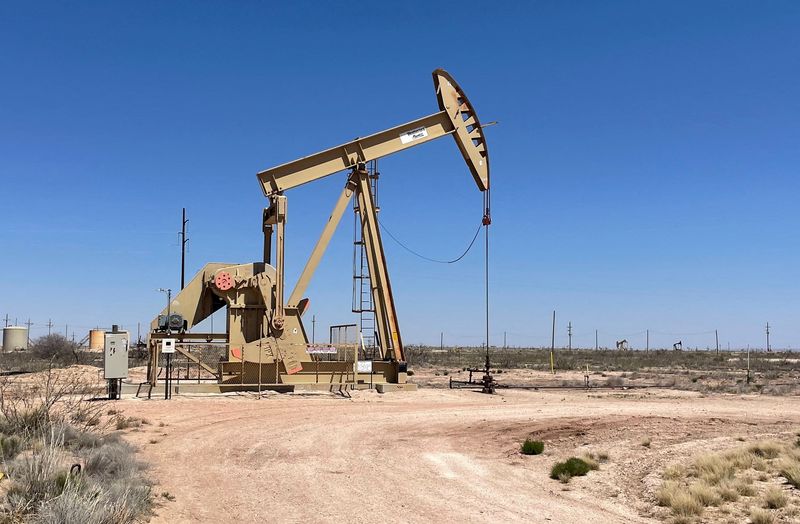Commodities
Marketmind: Plunging yields, oil checked amid BOJ jolt


© Reuters. FILE PHOTO: The Wall Street sign is pictured at the New York Stock exchange (NYSE) in the Manhattan borough of New York City, New York, U.S., March 9, 2020. REUTERS/Carlo Allegri/File Photo
A look at the day ahead in U.S. and global markets from Mike Dolan
Plummeting bond yields and oil prices clawed back some of the week’s dramatic falls on Thursday, while a burst of speculation about a Bank of Japan policy tightening this month cut across the interest rate optimism and catapulted the yen higher.
The size and slightly erratic nature of this week’s macro market moves may speak a little to yearend markets both squaring off books and jockeying for position for 2024.
But a stream of softer labor market and inflation news – not least an oil price plunge to 6-month lows on booming supplies – has been relentlessly positive for bonds along with clear signs of central bank policy shifts going into next year.
Too far, too fast? Ten-year Treasury yields plumbed three months lows near 4.1% on Wednesday and money markets are pricing well over 100 basis points of central bank rate cuts next year.
Ten-year U.S. yields recaptured about 6bp of the 25bp drop over the past week early on Thursday – although ten-year German bund yields continued to fall to their lowest since May.
Cutting across the global rates euphoria, however, were Bank of Japan comments that spurred markets into upping chances of another tightening of monetary policy there as soon as this month. That saw 10-year Japanese government bond yields jump more than 10bps and the yen jump almost 2% to its best level since September 1.
BOJ Governor Kazuo Ueda said on Thursday the central bank – the lone holdout over the past two years of G7 tightening – has several options on which interest rates to target once it pulls short-term borrowing costs out of negative territory.
The five-year JGB yield leapt 10.5 bps to 0.34% – the biggest increase in a single day since April 2013.
And yet, it was hard to ignore the latest oil price fall to its lowest since June as another major disinflationary force – while trade news from China continued to show worrying demand signs from the world’s second biggest economy despite some rebound in overall exports.
China’s crude oil imports in November fell 9.2% year-on-year, the first annual decline since April, as high inventory levels and poor manufacturing activity took their toll.
U.S. retail gasoline pump prices have now fallen to their lowest since January.
All of which switches Wall St traders back to demand signals at home, with another round of labor market updates on weekly jobless and November layoffs due later ahead of Friday’s official employment report.
The private-sector jobs reading from ADP on Wednesday came in below forecast, chiming with the previous day’s news of a surprising drop in job openings in October.
The frenetic macro market activity – which saw bond market volatility gauges jump back to their highest since October this week – has stopped benchmark stock markets in their tracks. The closed slightly in the red on Wednesday and futures were flat ahead of today’s open.
Asia and European bourses fell back too, with underperforming with losses of almost 2% on the rate speculation and yen surge.
Key developments that should provide more direction to U.S. markets later on Thursday:
* U.S. November layoffs, weekly jobless claims. U.S. Oct consumer credit
* Federal Reserve issues quarterly financial accounts of the United States. European Central Bank President Christine Lagarde attends euro group meeting of euro finance ministers in Brussels, focussed on 2024 budget plans
* EU-China Summit in Beijing
* U.S. Treasury auctions 4-week bills
* U.S. corporate earnings: Broadcom (NASDAQ:), Cooper Companies, Lulumelon Athletica, Dollar General (NYSE:)
(By Mike Dolan, editing by Christina Fincher; mike.dolan@thomsonreuters.com)
Commodities
Oil prices rise; U.S. crude inventories plunge, Russia-Ukraine truce eyed
Commodities
India’s Reliance to stop buying Venezuelan oil over US tariffs, sources say
Commodities
Oil prices climb on Venezuela supply worries

 Forex3 years ago
Forex3 years agoForex Today: the dollar is gaining strength amid gloomy sentiment at the start of the Fed’s week

 Forex3 years ago
Forex3 years agoUnbiased review of Pocket Option broker

 Forex3 years ago
Forex3 years agoDollar to pound sterling exchange rate today: Pound plummeted to its lowest since 1985

 Forex3 years ago
Forex3 years agoHow is the Australian dollar doing today?

 Cryptocurrency3 years ago
Cryptocurrency3 years agoWhat happened in the crypto market – current events today

 World3 years ago
World3 years agoWhy are modern video games an art form?

 Commodities3 years ago
Commodities3 years agoCopper continues to fall in price on expectations of lower demand in China

 Economy3 years ago
Economy3 years agoCrude oil tankers double in price due to EU anti-Russian sanctions

































